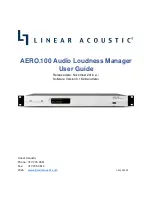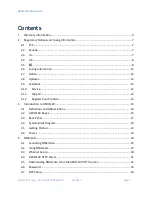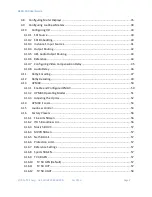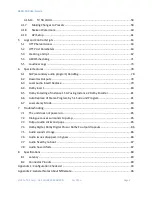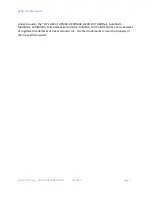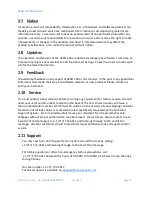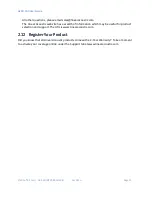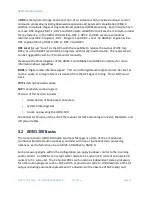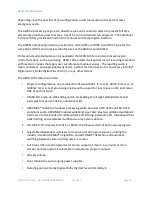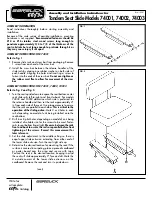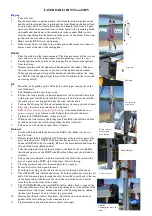
AERO.100 User Guide
©2016 TLS Corp. ALL RIGHTS RESERVED
Oct 2016
Page 7
2
2
2
2
Regulatory Notices and Fusing Information
Regulatory Notices and Fusing Information
Regulatory Notices and Fusing Information
Regulatory Notices and Fusing Information
2.1
2.1
2.1
2.1
FCC
FCC
FCC
FCC
This equipment has been tested and found to comply with the limits for a Class A digital device,
pursuant to Part 15 of the FCC Rules. These limits are designed to provide reasonable
protection against harmful interference when the equipment is operated in a commercial
environment. This equipment generates, uses, and can radiate radio frequency energy and, if
not installed and used in accordance with this instruction manual, may cause harmful
interference to radio communications. Operation of this equipment in a residential area is likely
to cause harmful interference in which case the user will be required to correct the interference
at his or her own expense.
2.2
2.2
2.2
2.2
Canada
Canada
Canada
Canada
This Class A digital apparatus complies with Canadian ICES-003.
2.3
2.3
2.3
2.3
UL
UL
UL
UL
WARNING: Troubleshooting must be performed by a trained technician. Do not
attempt to service this equipment unless you are qualified to do so.
Check that the correct fuses have been installed. To reduce the risk of fire,
replace only with fuses of the same type and rating.
Exposed portions of the power supply assembly are electrically “hot”. In order to reduce the
risk of electrical shock, the power cord MUST be disconnected when the power supply
assembly is removed.
The ground terminal of the power plug is connected directly to the chassis of the unit. For
continued protection against electric shock, a correctly wired and grounded (earthed) three-pin
power outlet must be used. Do not use a ground-lifting adapter and never cut the ground pin
on the three-prong plug.

